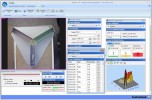Authors
G. Le Pen, R. Gourevitch, F. Hazane, C. Hoareau, T.M. Jay et al.
Lab
INSERM, U796, Pathophysiology of Psychiatric Disorders, Faculty of Medecine Paris Descartes, Sainte-Anne Hospital, Centre Paul Broca, Paris, France.
Journal
Neuroscience
Abstract
Schizophrenia is thought to be associated with abnormalities during neurodevelopment although those disturbances usually remain silent until puberty; suggesting that postnatal brain maturation precipitates the emergence of psychosis. In an attempt to model neurodevelopmental defects in the rat, brain cellular proliferation was briefly interrupted with methylazoxymethanol (MAM) during late gestation at embryonic day 17 (E17). The litters were explored at pre- and post-puberty and compared with E17 saline-injected rats. We measured spontaneous and provoked locomotion, working memory test, social interaction, and prepulse inhibition (PPI). As compared with the saline-exposed rats, the E17 MAM-exposed rats exhibited spontaneous hyperactivity that emerged only after puberty. At adulthood, they also exhibited hypersensitivity to the locomotor activating effects of a mild stress and a glutamatergic N-methyl-d-aspartate receptor antagonist (MK-801), as well as PPI deficits whereas before puberty no perturbations were observed. In addition, spatial working memory did not undergo the normal peri-pubertal maturation seen in the sham rats. Social interaction deficits were observed in MAM rats, at both pre- and post-puberty. Our study further confirms that transient prenatal disruption of neurogenesis by MAM at E17 is a valid behavioral model for schizophrenia as it is able to reproduce some fundamental features of schizophrenia with respect to both phenomenology and temporal pattern of the onset of symptoms and deficits.
BIOSEB Instruments Used:
Smart 3.0 - Video Tracking System (SMART30)

 Pain - Thermal Allodynia / Hyperalgesia
Pain - Thermal Allodynia / Hyperalgesia Pain - Spontaneous Pain - Postural Deficit
Pain - Spontaneous Pain - Postural Deficit Pain - Mechanical Allodynia / Hyperalgesia
Pain - Mechanical Allodynia / Hyperalgesia Learning/Memory - Attention - Addiction
Learning/Memory - Attention - Addiction Physiology & Respiratory Research
Physiology & Respiratory Research
 Pain
Pain Central Nervous System (CNS)
Central Nervous System (CNS) Neurodegeneration
Neurodegeneration Sensory system
Sensory system Motor control
Motor control Mood Disorders
Mood Disorders Other disorders
Other disorders Muscular system
Muscular system Joints
Joints Metabolism
Metabolism Cross-disciplinary subjects
Cross-disciplinary subjects SFN2024: Meet our team in Chicago on booth #876
SFN2024: Meet our team in Chicago on booth #876 